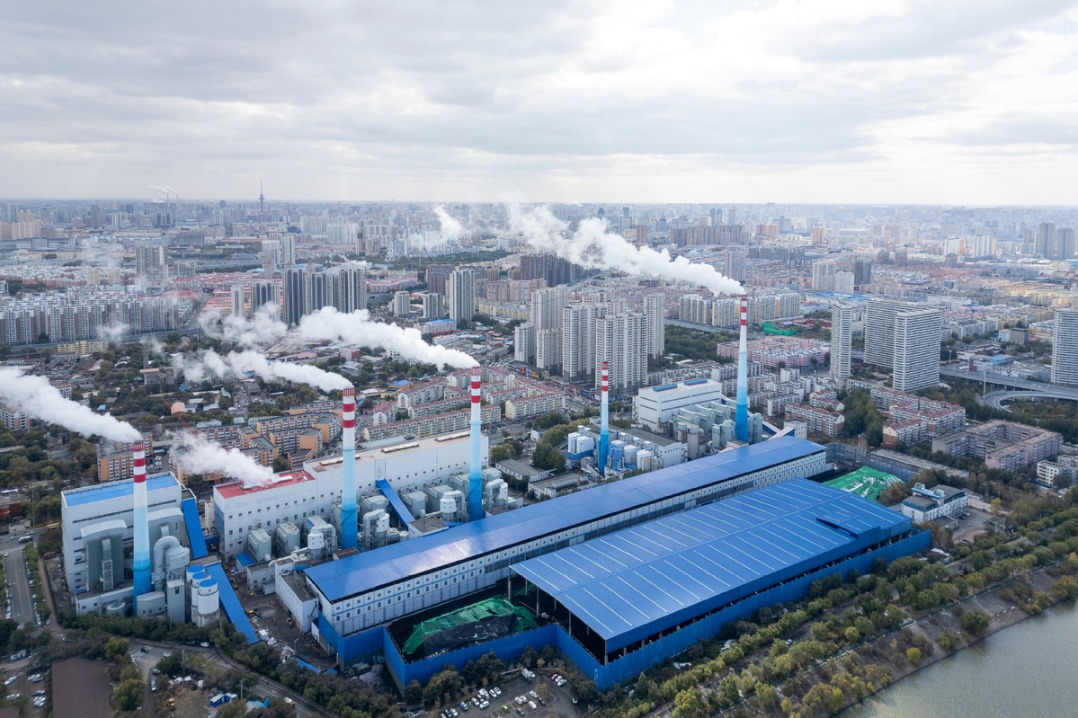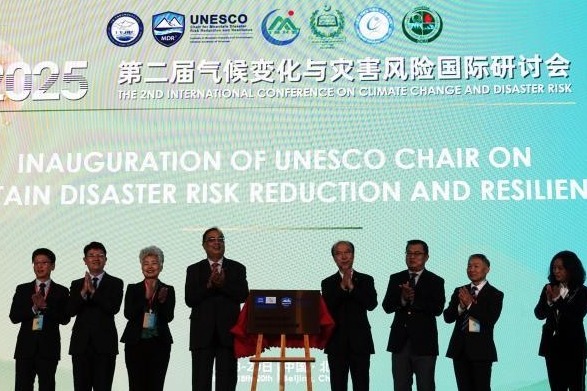Nation's green initiatives a catalyst for global change
Innovation, expertise shared to help solve other countries' climate challenges


Displaying its commitment to green development, China has not only established the world's largest renewable energy system and led the production and sales of new energy vehicles for a decade, but is also catalyzing global change.
Through South-South cooperation and the Belt and Road Initiative, it is actively sharing its innovation expertise and technologies to propel green transition in developing countries.
Li Gao, vice-minister of ecology and environment, highlighted the remarkable progress China has made in solar and wind energy development at a recent news conference, saying that total installed capacity had already achieved the 2030 target.
China envisaged 1,200 gigawatts wind and solar power generation capacity by 2030, but, according to the National Energy Administration, the figure reached 1,700 GW by the end of August.
The vice-minister also highlighted the country's efforts in promoting the control of non-carbon dioxide greenhouse gases, especially methane, which has more than 80 times the warming power of CO2 in the first 20 years after it reaches the atmosphere.
In November, the ministry, together with 10 other national government bodies, revealed an action plan to control methane emissions.
The plan set a series of specific reduction and control targets in different sectors. By 2025, for instance, the coal mining sector is expected to collect 6 billion cubic meters of methane trapped in coal seams for utilization. The limit for the maximum allowable methane concentration from emissions has been reduced from 30 percent to 8 percent, Li added.
The vice-minister also noted advances being made in leveraging carbon trading for emissions reduction, supported by improved carbon footprint management.
"China has built the world's largest carbon trading market based on the volume of greenhouse gas emissions covered, and this coverage is being progressively expanded," he said.
This year, the market has expanded to steel, cement, and aluminum smelting industries, he said. This means that over 60 percent of the country's carbon dioxide emission has been brought under effective regulation.
China launched its carbon trading market in July 2021, with a focus on the power generation sector.
The market has demonstrated strong growth, with the cumulative trading volume reaching 714 million metric tons of carbon emission allowances for 48.96 billion yuan ($6.9 billion) as of Sept 18, he said.
A management system for a product carbon footprint — which helps consumers make informed eco-friendly choices — is rapidly taking form in China, Li added. Two milestones included the release of over 100 accounting standards and this year's launch of a national greenhouse gas emission factor database, which filled a void, he said.
Tech innovation
China has not only developed robust green industries, but also become a global leader in green technology innovation, said Chai Qimin, director of the strategic planning department at the National Center for Climate Change Strategy and International Cooperation.
It is the global leader in the new energy vehicle sector, claiming 11 of the world's top 20 NEV brands and six of the top 10 power battery suppliers, he said at a recent forum on zero-emissions transportation, which was held by China Clean Transportation Partnership. It is also responsible for over 70 percent of power battery production capacity.
"In the past, it was generally believed that Chinese manufacturing was characterized by large scale and low cost, but with limited innovation. Many patents were likely held by European and American companies," he said.
"In recent years, however, this is no longer the case in the green technology sector."
Since 2016, China has accounted for 34 percent of global patent filings in the green and low-carbon field, he said, citing statistical analyses of patents.
If overseas patents held by Chinese companies expanding abroad are included, the share of such patents reaches approximately 58 percent. "China has become the most active and productive market for innovation in the global green and low-carbon field," Chai said.
Wu Rui, an expert with the Transport Planning and Research Institute, said China's low-carbon transportation has expanded in recent years from passenger cars and buses to include heavy-duty vehicles.
The country has implemented a series of initiatives in the transportation sector, from top-level strategies to specific policies to promote green, low-carbon transition, Wu said, adding they have effectively cascaded from the national to local levels. "Every step we take involves concrete actions, instead of just paying lip service, or making empty promises," he said.
Wu presented a series of figures to demonstrate China's commitment to a low-carbon transition in the transportation sector.
In 2020, the total number of new energy vehicles in China stood at roughly 4.9 million, Wu pointed out. By the first half of 2025, however, this figure had jumped to 36.89 million.
The renewable transition has also expanded significantly to include heavy-duty vehicles such as trucks, engineering machinery, and ships, he added.
There are now over 1,000 new energy ships operating in China's inland waterways, and this number is expected to increase rapidly as the country continues to implement its large-scale equipment renewal policy.
Meanwhile, 2,000 outdated ships were dismantled last year to make room for new energy vessels.
China's new energy vehicle sector now includes not only electric power but also hydrogen and biodiesel, each benefiting from strong research support and significant industry focus, Wu said.





































